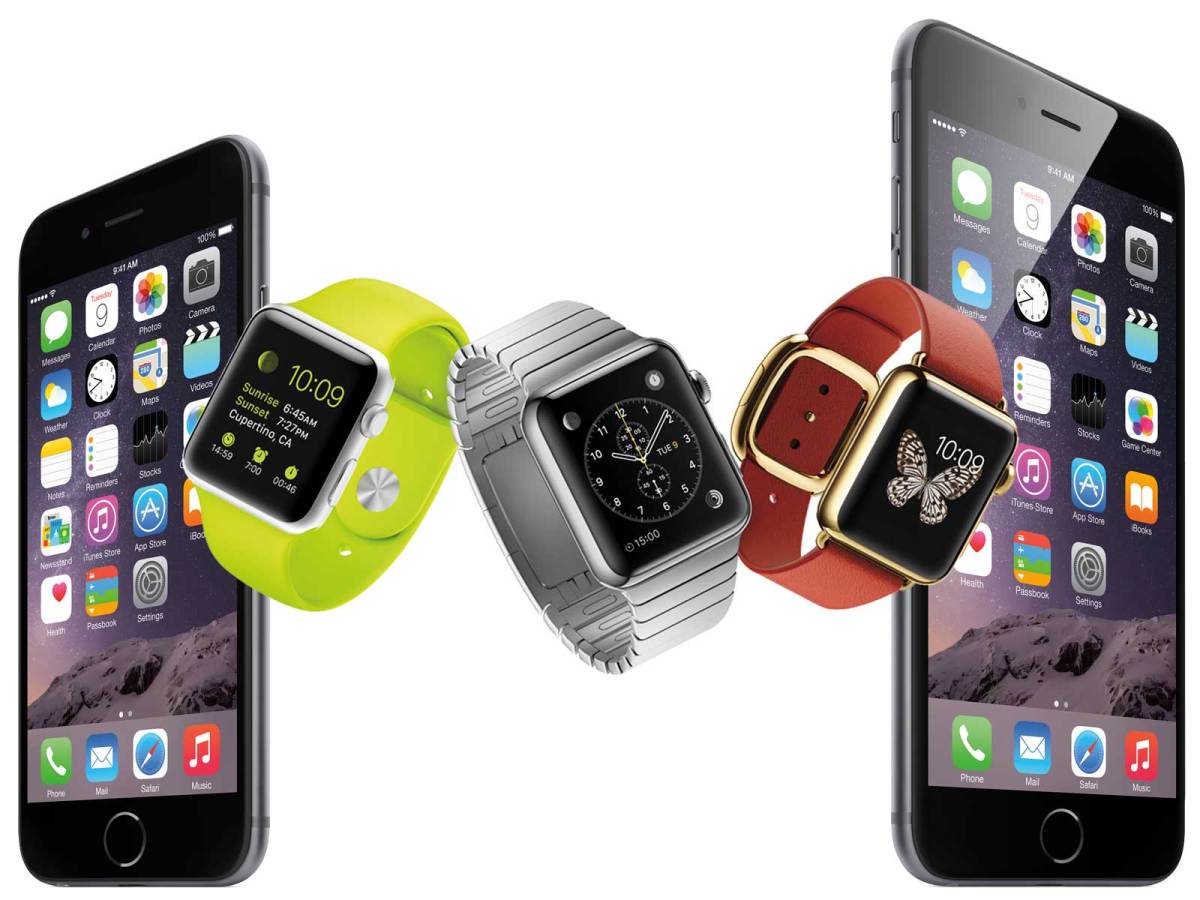Apple’s newest device to make fanboys and ordinary consumer alike salver, the Watch, will be released in April 2015, at least in the United States, CEO Tim Cook confirmed in a conference call with investors overnight.
Describing it as “incredible innovation”, Cook said Apple had made “great progress” with the Watch, which will sell in the US from $349, which is just under AU $440. This is somewhat more expensive than Sony’s SmartWatch 3 (RRP $299) but on par with Samsung’s Gear S (RRP $449), both of which, incidentally, are sold direct online to consumers.
At the same time that Cook revealed the April release for the Watch, the company said it had sold 74.5 million iPhones, 21.4 million iPads and 5.5 million Macs in the three months to 27 December 2014. This resulted in a record quarterly revenue result of $74.6 billion and a net profit of $18 billion. Both of these are up sharply from the previous corresponding quarter, when revenues totaled $57.6 billion and net profit was $13.1 billion. One figure sure to make rival suppliers and retailers green with envy is Apple’s gross margin: it was up 2 percentage points to 39.9 per cent for the quarter.
“We’d like to thank our customers for an incredible quarter, which saw demand for Apple products soar to an all-time high,” said Cook. “Our revenue grew 30 percent over last year to $74.6 billion, and the execution by our teams to achieve these results was simply phenomenal.”
Loizos Heracleous is a professor of strategy, specialising in Apple, at the Warwick Business School in the United Kingdom. He said Apple’s higher selling price and incursion into China have been major reasons for its success.
“Apple’s quarterly profits are the result of the company’s competitive advantages; namely great design, innovation, and intense efficiency,” Heracleous said. “Apple’s entry to China has been instrumental to revenue growth, and the upside potential in revenues from this market is very significant. At the same time, economies of scale and scope led to even greater efficiencies. Combined with a higher selling price for the iPhones, operating profits are up to nearly 40 per cent of revenues, which is unprecedented in consumer electronics.”
Heracleous said that falling iPad is not a huge concern for the Californian company because its product range is diverse and balanced.
“Even though iPad sales are falling, overall, the product portfolio of Apple is balanced in terms of stages of the product life cycle. The strategic implications of ApplePay have not been appreciated by most people. Not only is the revenue potential huge, with Apple’s offering already benefiting from the existing market penetration of its devices; margins are also very healthy and the service has synergies with the iPhone and the Watch, helping to solidify Apple’s strategy of building and controlling a product and service ecosystem.
“Similarly, the Watch will provide a further boost in growth and will buttress the ecosystem when it comes to market.”
Interestingly, the professor said attributing the success of Apple to a single product, nominally the the iPhone, was narrow thinking.
“Apple’s strategy displays related diversification. Those who argue that its success is down to a single product do not appreciate the considerable synergies across Apple’s products and services, nor the continued development and strengthening of Apple’s ecosystem.”
As we opined earlier, Apple’s rather atypical decision to announce the Watch with nebulous release dates in the middle distance smacks of a thinly veiled desperation to prevent consumers from purchasing wearables from rival brands.
Meanwhile, Fairfax is today reporting that Apple’s Australian subsidiary paid “just” $80.3 million in tax off $6 billion in local revenue.

